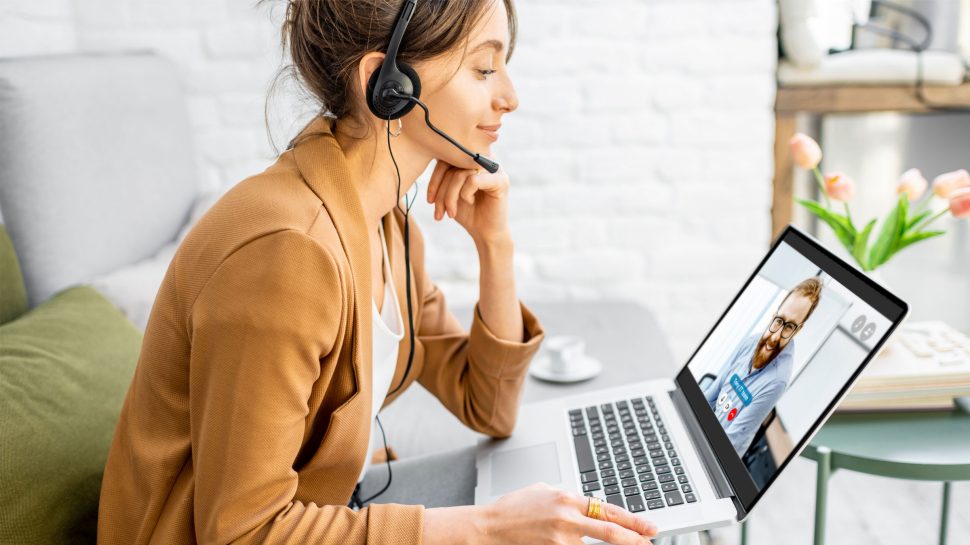Leading in a new reality
While Australia is cautiously moving into the recovery stage of the COVID-19 pandemic, uncertainty will likely stay with us for many months. For managers and leaders guiding their people through this new reality, Beyond Blue has a few strategies for looking after your people's mental health and wellbeing.

Key points
- The changes to home and work life can be stressful for many employees.
- Leaders need to promote a mentally healthy workplace.
- Beyond Blue outlines the initiatives leaders can take to help protect their people’s mental health and wellbeing.
- Australia Post shares how it helped protect its people's psychological wellbeing during this time.
The way we work has drastically changed this year. Whether it’s working significantly longer or reduced hours or working from home, we’ve all had to learn new ways of getting the job done. In the midst of that, we’ve also had to learn a new way of living.
Transitions of this magnitude in our work lives can be stressful and sometimes, distressing. A survey in April by Relationships Australia found that up to 98% of respondents across every industry reported ‘significant changes’ to their work since the pandemic began. 63% of these respondents also experienced changes to their mental health as a result of changes in their work life.
While every workplace has adapted differently, all have likely relied on their leaders to steer their people through change with clear guidance, effective communication and most importantly, by continuing to promote a mentally healthy workplace.
According to Patrice O’Brien, Beyond Blue’s Chief Community Officer, many businesses were on the right foot from the get go when things began changing in March. She remembers there being “a genuine and urgent concern from businesses for the wellbeing of their people.”
Patrice says that many organisations are already thinking of mental health in a way that involves integrating it with their work culture. Her conversations have unearthed three key areas around mental health that are at the forefront of people’s minds – the economic impact, safety at work and the future of work.
“Many people have been hit hard and most organisations have been impacted economically and financially,” she says. The Australian Bureau of Statistics (ABS) reported in May that 72% of businesses have seen a decrease in revenue.
“There’s also a big safety impact for businesses, not just around cleaning practices but also psychosocial risks like changes at work, job clarity and being exposed to physical hazards. Then there’s the question of what work will look like in the near future.”
ABS data shows that 74% of actively trading businesses have changed their operating models in the past few months, including scaling down, moving inventory and reducing workforce. The bigger the business, the bigger the impact of these changes on their operations and workforce.

Know or support an Australian community organisation that’s helping to build mentally healthy, resilient and connected communities? Encourage them to apply for an Australia Post community grant of up to $10,000.
Leadership in a time of crisis
A recent survey by Nature and the Lab of 3,500 respondents found that 44% of them are putting on a brave face but are deeply worried in private. Employers may need to be vigilant of this when engaging with their people and leaders.
Patrice says there are three types of leaders that are usually associated with producing better mental health outcomes. The first is a transformative leader who motivates and inspires people. The second is a task-oriented leader who focuses on prioritising tasks and getting results. The third is a relations-oriented leader who meets the interpersonal needs of employees.
“What all three leaders need to embody is authenticity,” she says. “There has to be a strong focus on managing uncertainty right now by demonstrating responsibility, giving clear guidance and setting clear expectations.”
“Effective communication is another way to promote trust and reduce uncertainty as long as the narrative is consistent and there’s transparency. Stay close to your people. Remember that many are putting on a brave face so listen carefully to them because sometimes the smallest word is the most important. It is also important that leaders remember to look after themselves.”
Senior leaders in large organisations are often not strangers to crisis management. They generally know how to identify trouble spots, mitigate risks and stay adaptable. But what they may also need to do in this time is look for the positives in these changes and consider how to retain them as part of the new work culture.
One such positive is the success and benefit of flexible work. New research from the DCA-Suncorp Inclusion@Work Index shows that flexible work fuels performance and improves employee wellbeing, and predicts it will be critical for an inclusive recovery post COVID-19. Even as businesses make plans for their workforce to return, Patrice says there is a real opportunity to make flexibility the new normal.
“People want autonomy back. They want to have the option to choose whether to work in the office or at home. Flexibility done well is good for everyone. If your organisation decides to make this the way forward then it must make sure that flex is equitable and accessible to all types of workforce groups.”
Right now, however, there is significant anxiety over returning from the shutdown too quickly. Latest research from Culture Amp found that half of the 32,000 workers they surveyed aren't eager to return to the office and two-thirds say they would feel unsafe commuting to work when the restrictions lift.

Making workplaces safe places
Many workplaces have indicated to their people that they won’t be heading back to the office anytime this year. Other workplaces are preparing to welcome their people back within the next few months. Australia Post’s National Health and Wellbeing Manager, Fiona Andrew, isn’t exaggerating when she says planning the return of its office-based workforce is “a mammoth task.”
“We have to consider all aspects of physical safety. Feeling safe at work has a direct impact on our mental health. So there’s been extensive planning around managing issues like employee illness, meeting rooms, lift capacity and communal spaces like the bathrooms and kitchens.
“But the biggest task for my team during this time, has been to provide the guidance, tools and resources to support our people to look after their psychological safety. This was the priority right from the start and it will remain a priority as teams reconfigure and settle into a different way of working. Encouraging teams to stay well connected is also vital as we know that connection is a strong protective factor in positive mental wellbeing.”
While Australia Post shut down its corporate office, it kept most of its Post Offices, parcel facilities and most of its delivery network operational during COVID-19. Fiona’s team moved quickly to develop a psychological safety plan to address the psychological risks as they emerged in response to the evolving nature of the crisis.
Key elements of this plan included promoting the Employee/Workforce Assistance Program (EAP/WAP), developing resources to guide leaders in supporting their teams and distributing messages of empathy, support and appreciation from frontline leaders in Australia Post’s delivery and contact centre networks.
“Our EAP/WAP has been a wonderful source of support for our workforce during this time. Many of us have reached out to this service in the last few months to manage COVID-related anxiety.”
“Our EAP/WAP provider also created a new manager-referred support program which provides weekly outbound call support to employees working from home, for whom the home environment may not be comfortable, social or safe.”
Creating a mentally healthy workplace
COVID-19 has shown businesses the value of a strategic approach that protects, promotes and supports mental health at work.
For extra support and guidance during the coronavirus pandemic, Beyond Blue has established the Coronavirus Mental Wellbeing Support Service.
Here’s Beyond Blue’s guide to helping create a mentally healthy workplace whether your people continue working remotely or return to the office:
- Improve your understanding of mental health. Regularly provide information on the signs and symptoms of various mental health conditions and share available support networks with employees.
- Keep a growth mindset. Stay flexible and adaptable around your communication systems and how you’re using it. Video conferencing is necessary but also fatiguing when overused.
- Lead by example. People find it hard to shut off when they’re working from home. Good leadership isn’t just telling them not to work beyond office hours but enabling that. Don’t have a 4.30pm meeting and assign work that’s due the next morning.
- Think about work design in terms of role clarity, recognition, feedback and task variety. This will help protect employees’ mental health during future moments of uncertainty.
- Integrate your mental health initiatives into the day-to-day running of your business. Rather than invest in expensive initiatives, choose simple and inclusive practices like scheduling mini breaks throughout the workday.
- Support people who are facing mental health challenges by training leaders to monitor mental health and remove barriers around seeking mental health support.
Every workplace has been impacted differently by the pandemic and will require a tailored approach in creating a mentally healthy environment. Beyond Blue’s fact sheet on creating a mentally healthy workplace will help get you started.

Want to thank your people?
Gift cards are a great way to say thank you, show empathy to those doing it tough and reward those who have put in the hard work.
This article is provided for general information purposes only and is not intended to be specific advice for your business needs.
Subscribe to our Building Business newsletter
Subscribe to our Building Business newsletter
Read engaging business stories, discover new ideas, and learn about great offers in our monthly business newsletter.



